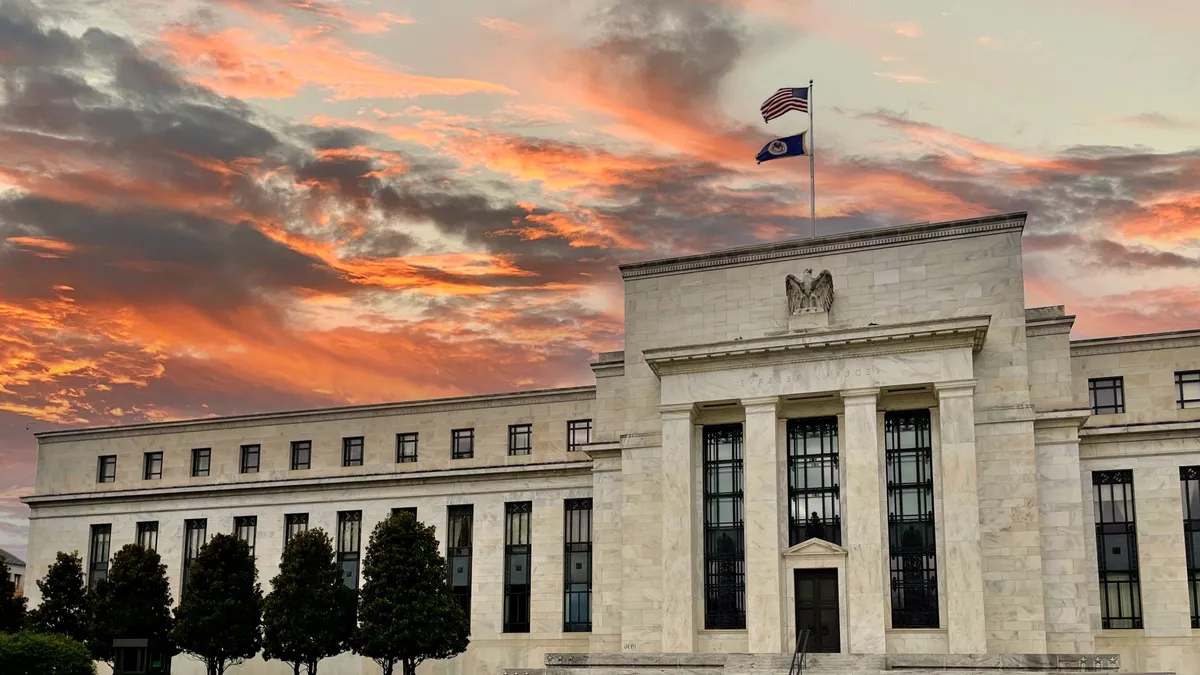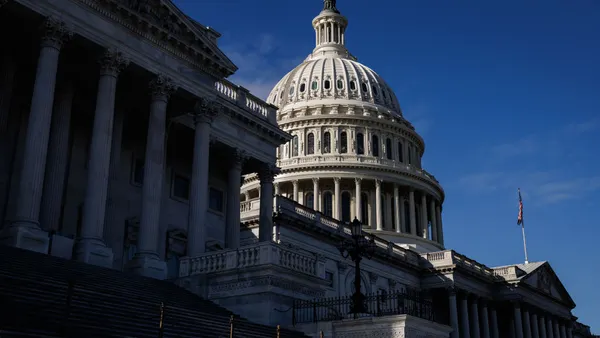Dive Brief:
- The consumer price index rose last month at just a 2.9% annual rate, slowing to a three-year low and fueling expectations that the Federal Reserve will trim the main interest rate next month by at least a quarter percentage point.
- Compared with June, energy prices were unchanged and prices for apparel and used vehicles fell 0.4% and 2.3%, respectively, the Labor Department said Wednesday. The declines blunted a 0.4% gain in shelter costs, which accounted for nearly 90% of the monthly increase in CPI. Fuel costs in July increased 0.9% month to month.
- “We see the signal from this report as reinforcing the Fed’s bias to cut, and we continue to expect that cut to come in September,” Bank of America economists said in a report. They predict policymakers will reduce the federal funds rate by a quarter-point in both September and December.
Dive Insight:
The central bank at its Sept. 17-18 meeting will need to weigh receding inflation against signs of a slowing economy and weakening labor market, the Bank of America economists said. Congress has directed policymakers to achieve two goals: maximum employment and price stability.
“The Fed will likely see itself balancing both sides of its mandate, where the economy is cooling on one side but inflation remains above [its 2%] target on the other,” the bank’s economists said.
Fed Chair Jerome Powell and his colleagues in the past several weeks have shifted more of their concern to the job market.
The jobless rate increased last month to 4.3% from 4.1% in June, and payrolls expanded only 114,000, below expectations and the lowest monthly increase this year.
“The labor market continues to loosen, as the number of available workers has increased and the number of available jobs has declined — showing signs that the labor market is coming into better balance,” Fed Governor Michelle Bowman said Saturday in a speech.
Recent data may overstate softening in the labor market, Bowman said, cautioning against easing monetary policy too early based on unwarranted optimism that the Fed will curb inflation to its 2% target.
“We need to be patient and avoid undermining continued progress on lowering inflation by overreacting to any single data point,” she said.
For their part, consumers have grown more confident that price pressures will decline. Their median expectations last month for inflation in three years fell 0.6 percentage point to 2.3 percent, hitting a record low in a data series begun in 2013, the New York Fed said Monday.
Wall Street investors and economists believe data signal that next month the Fed will reduce borrowing costs for the first time in the current monetary policy cycle. The central bank has held the benchmark interest rate at a range between 5.25% and 5.5% since July 2023.
“It would take quite a bit of evidence that the U.S. economy is reheating for an interest rate cut in September to come under doubt,” Matt Colyar, an economist with Moody’s Analytics, said in an email.













